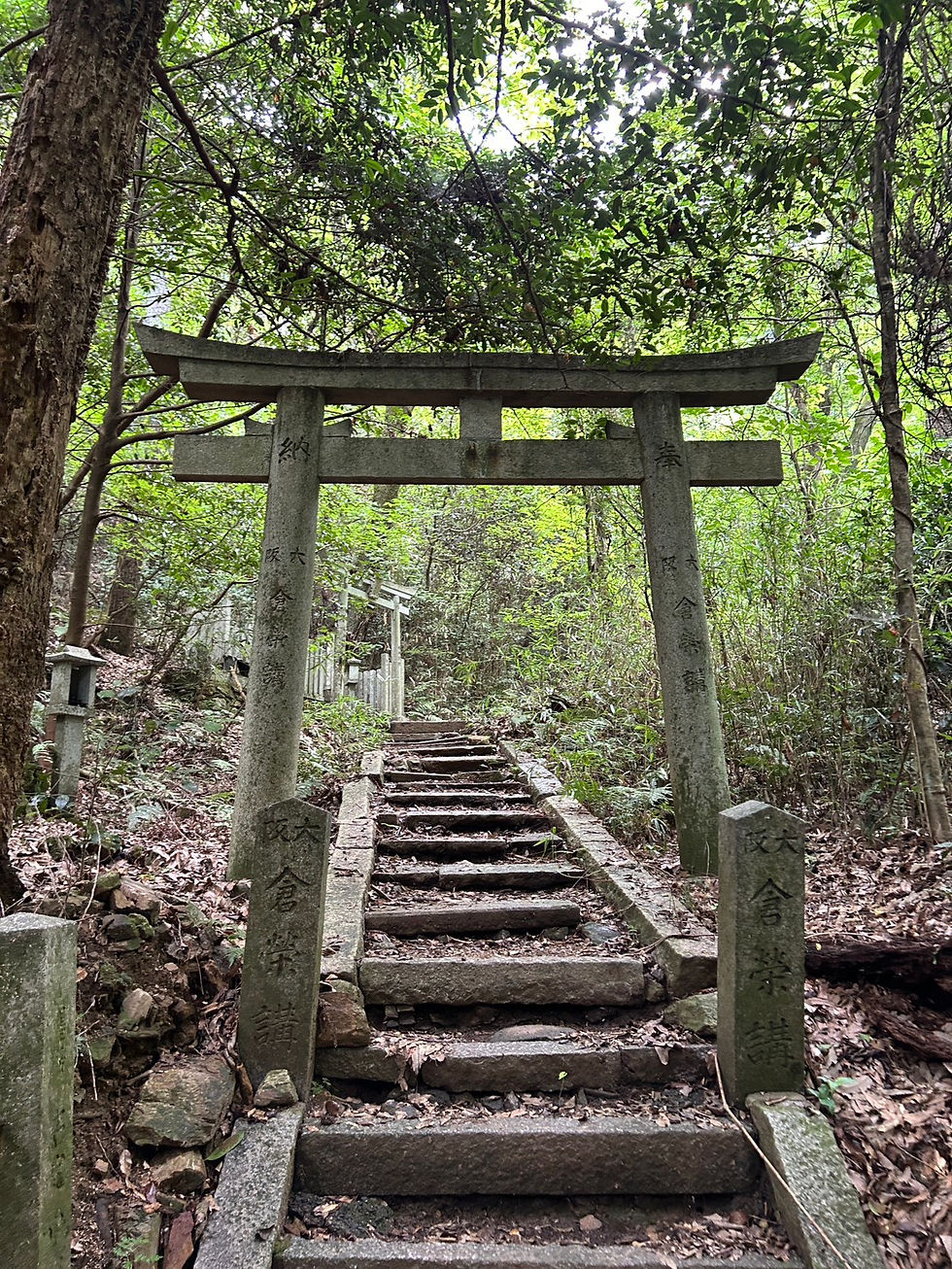Disappearing History - A Hidden Military Railway Line.
- Phillip Jackson

- Jun 11, 2022
- 2 min read
In the last HIDDEN PATHS - Walking Historical Kyoto blog post we introduced an underground military facility in Obaku, Kyoto that was up until 1945 a munitions storage site. In this post we look at another Kyoto military location, and not too far away from the Obaku site.
Just a minute walk from Kohata JR Station, close to the Kyoto Animation building is a tree-lined foot and bicycle path.

Running alongside it on one side is the JR Nara Line and to the other, beyond the trees, a school, houses, and Kohata Shrine (Kohata Shrine has featured in a previous HIDDEN PATHS - Walking Historical blog post (The Resting Stone of Emperor Tenmu https://www.hiddenpathskyoto.com/post/the-resting-stone-of-emperor-tenmu ) as well as being featured in HIDDEN PATHS - Walking Historical Kyoto Volume 1 and the compilation of Volumes 1 - 4 Omnibus Edition https://www.amazon.co.jp/-/en/dp/B087SDHPN8/ref=tmm_pap_swatch_0?_encoding=UTF8&qid=1588285224&sr=8-1
Walking this way you'll see one tell-tale sign that a train used to come this way. A bench covered by what looks like a train platform roof, and also a train platform sign.

The path is straight for about a hundred metres and then splits, the foot path continues down a slope and to a residential area, but an embankment leading off turns to the left. Where the footpath starts near Kohata Station was the start of a military railway line that ran along this route. The embankment is the direction of that railway line as it ran around to a military munitions factory that stood on a site close by, now used by PANASONIC and a water treatment site.
At the start of the path is a signboard giving some history and background to the location. But further on from there you can only take your pointers from the landscape and the remains of the embankment.

The information board, pictured above states that the former Uji explosives factory was opened in 1896, this branch being opened in 1905, with expansion work being carried out from 1928. At the end of the war the facility was closed. Pictured below you can see where the footpath leads down to the right, and the embankment where the railway line ran on the left.

Taking the path to the right and following from below the embankment you'll be able to get a better look at the stone works of the line and where it ran, pictured below.

Look out also for small stone marker posts that designate the location as a 'military site' though the land no longer belongs to the military, reminders of the past that are easily missed (pictured below).

Kyoto has a rich history, and it isn't all full of temples, tea, and gardens. Some of Kyoto's history is hidden, and it is the aim of HIDDEN PATHS - Walking History Kyoto to make visitors to Kyoto aware of more than just what you'll find in the mainstream guidebooks.
Access - Kohata JR Station on the JR Nara Line, or Keihan Kowata Station on the Uji Line.




Comments